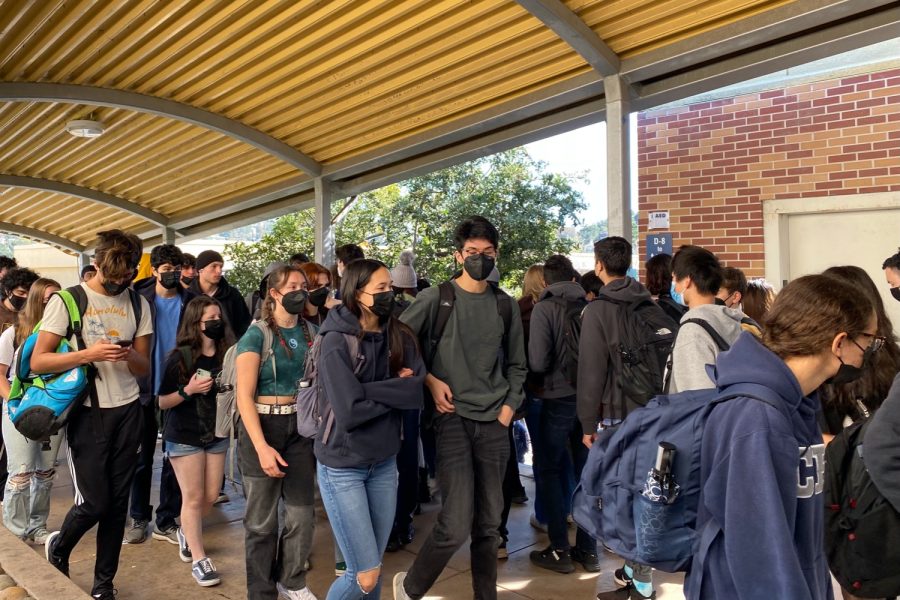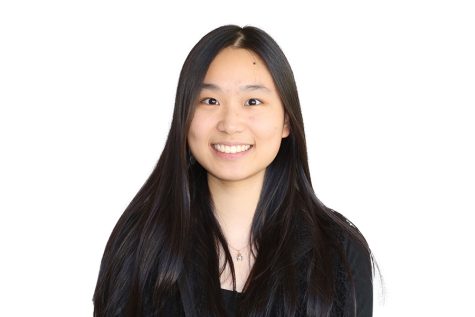*Article updated March 2
Starting March 12, schools in California will no longer require students to wear masks, although coverings are still strongly recommended. San Mateo County (SMC) will not add local health orders to guidelines on masking in schools.
On Feb. 28, Gov. Gavin Newsom announced an updated health guide. According to the statement, child care facilities will also move from mask requirements to mask recommendations. The mask mandate for unvaccinated individuals ended on March 1.
Coverings will still be required for everyone in environments with high transmissions, such as public transit, emergency shelters, health care settings, correctional facilities, homeless shelters, and long-term care facilities.
“California continues to adjust our policies based on the latest data and science, applying what we’ve learned over the past two years to guide our response to the pandemic,” Newsom said. “Masks are an effective tool to minimize the spread of the virus and future variants, especially when transmission rates are high.”
COVID-19 cases and hospitalizations peaked at the beginning of Jan. due to the emergence of the omicron variant. Later that month and throughout February, rates began declining, leading to loosening restrictions in California. Nevertheless, concerns remain over the spread of COVID-19 and whether ending the mask mandate might lead to another surge in cases.
According to a recent poll among California registered voters conducted by the University of California, Berkeley, 61% of parents of a school-age child approve the mask mandate.
While there will be bothered parents, the general sentiment about lifting the requirement appears positive in the county. SMC maintains a high vaccination rate, with almost 90% of individuals vaccinated, leading to less anxiety.
“My parents think it’s okay to lift the mask mandate,” said Rebecca Tseng, a junior. “They aren’t very concerned about it because they think the vaccination rate in this area is very high.”
Furthermore, most children are not at high risk of becoming very sick from COVID-19. Sara Shayesteh, a biology teacher, is not too worried about her kids going to school without the mask mandate in place.
“I’m lucky that none of them are considered high risk, and in general, this virus does not affect the younger population — especially kids — the way that it affects older people,” Shayesteh said.
On the other hand, teachers may be more prone to COVID-19 exposure. As students cycle in and out of their classrooms throughout the day, teachers have to come into close contact with a lot of individuals who could potentially carry the virus. Without the mask mandate, they may feel less secure teaching at school.
“Teachers are in close contact with many students every day — probably more than the average person,” Shayesteh said. “I definitely think some teachers will feel uneasy about the masks coming off soon. They may be at high risk or have someone in their home considered to be at high risk.”
However, the end of the mask mandate may not apply to all students, as they can still choose to wear face coverings. Many have also become accustomed to wearing masks outside of their home.
“I do think it is safe in general to lift the school mask mandate, as more people are vaccinated, and the rates have decreased, but I will probably continue wearing a mask until the end of the school year just because I feel safer [that way],” Tseng said. “I am not comfortable taking it off since I have worn a face covering in public for the past two years.”
Despite the positive turn in numbers, uncertainty will remain until the effects of removing the mask mandate emerge. For many, another spike in cases caused by premature adjustments to health guidelines would not be something they want to see.
“It’s been a long time, and the numbers are low enough to justify a shift back to normalcy. It’s really important for kids, in particular, to see faces for proper language development and to learn to read others’ facial expressions. On the other hand, we’ve made it this far with being so cautious and making it work with the masks,” Shayesteh said. “Part of me feels that we should just wait a little longer for the weather to get warmer before relaxing the masks.”
Still, the move to “mask recommended” reflects the state’s view of an improving pandemic situation.
“We cannot predict the future of the virus, but we are better prepared for it and will continue to take measures rooted in science to keep California moving forward,” Newsom said.






















